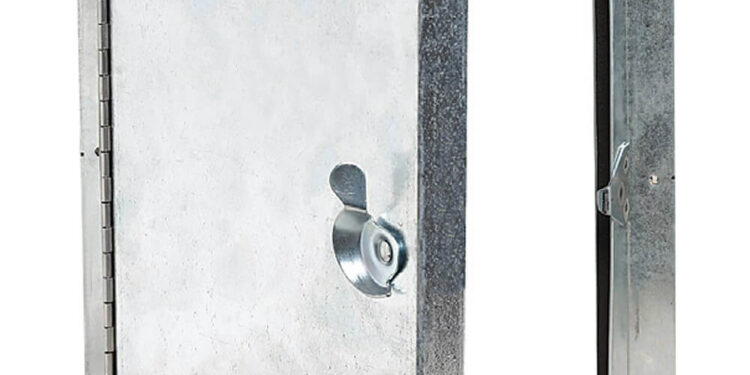Featuring Best Access Doors for your HVAC System.
A well-maintained HVAC system is integral for the daily operations of most residential and commercial buildings. It is critical for various reasons but most importantly to regulate or control the indoor temperature essential for comfort. You’ll need the right HVAC access door if you’re planning to extend the lifespan of your HVAC system.
Here are things you might need to know to select the best access doors available for your HVAC system:
What is an HVAC Access Door?
One can utilize HVAC access doors in commercial and residential HVAC system setups. It covers air handler units and other HVAC applications in the building. Its primary use is to get to HVAC mechanical systems when it requires maintenance rapidly. An integrated frame and hinged door are standard components of HVAC access panels. They get installed at the central sheet-metal duct for convenient system maintenance work.
These installations can have thermal and non-thermal features and almost any custom size. It may come with a robust double-shell construction and a flow-optimized inner shell to minimize turbulence, typically pressed from galvanized steel or stainless steel. It typically has a baked enamel finish available on some steel doors. The doors and panels’ metal has a standard corrosion-resistant feature, and the materials can withstand constant exposure to the elements.
Types of HVAC Access Doors
There are two standard HVAC access door types:
Air Duct Access Doors
The material composition of these access doors is durable galvanized steel, a cost-effective answer for any application requiring access to HVAC ductwork. Access to your air ducts is crucial for maintaining, cleaning, and inspecting them, which must be in line with the building code.
HVAC access doors enable the simple removal of dust and other material that might accumulate over time, causing ventilation equipment to be inefficient or cause a fire hazard. Bacterial and mold development, unwelcome pests, and various other health and safety risks are all possible consequences of dirty ducts. There is more accessibility to hard-to-reach regions by installing an air duct access door.
An HVAC duct access door has a simple installation procedure with only a few tools needed. A correctly built air duct access door will offer an airtight, leak-tight seal that provides simple access without endangering your ventilation system’s safety or performance.
Grease Duct Access Door
Grease duct access doors are an essential component of any kitchen ventilation system for successfully eliminating flammable grease from the ductwork.
The accessibility of the cleaning expert to your ductwork system determines how clean it will be. Not only are cleaning experts required to have proper access to the ductwork system, but it is also a requirement to comply with fire codes. All duct access doors must meet fire safety regulations.
It’s essential to consider the size of your ductwork when determining the number of access doors your system requires and the optimal installation pattern. Every 12 feet of ducting should have a duct access door placed. You can install duct access doors on the top or sides of the duct system, and they should be large enough to allow someone to enter the duct from outside.
Your duct access doors must have the same material and thickness as the ducts themselves. Ducts must be 16 or 18 gauge steel, the minimum thickness necessary to suppress a grease fire.
What to Consider for an HVAC Access Door Installation
If it is practical, you must utilize current openings, such as existing panels and doors, supply diffusers, or return grills to get access to an HVAC system’s interior. An airtight seal is essential to prevent leakage in an inward and outward setting and unrestricted airflow inside the duct or component.
Materials Utilized for Access Openings
Ensure that materials meet building code requirements, including the necessary fire hazard features. The doors and panels’ metal should be corrosion-resistant, and all materials should be able to withstand constant exposure to cold, heat, and moisture.
Takeaway
Before you decide to do anything, consider asking for some helpful tips or advice from licensed professionals. Their insights might prove critical for your undertakings before you start. This method will ensure that you get the optimal results for your projects. It is also an excellent recommendation to hire one outright if you have doubts.







